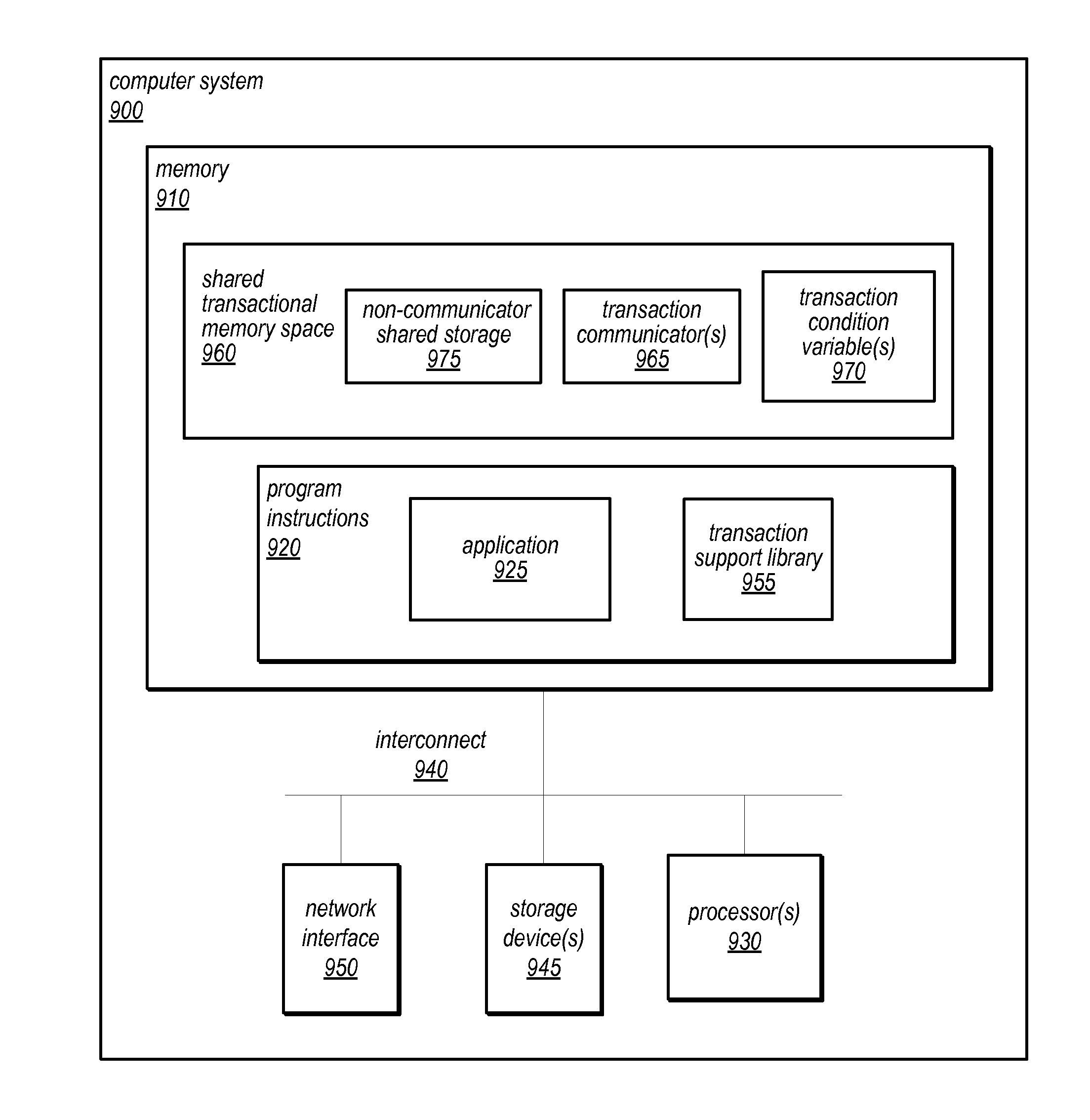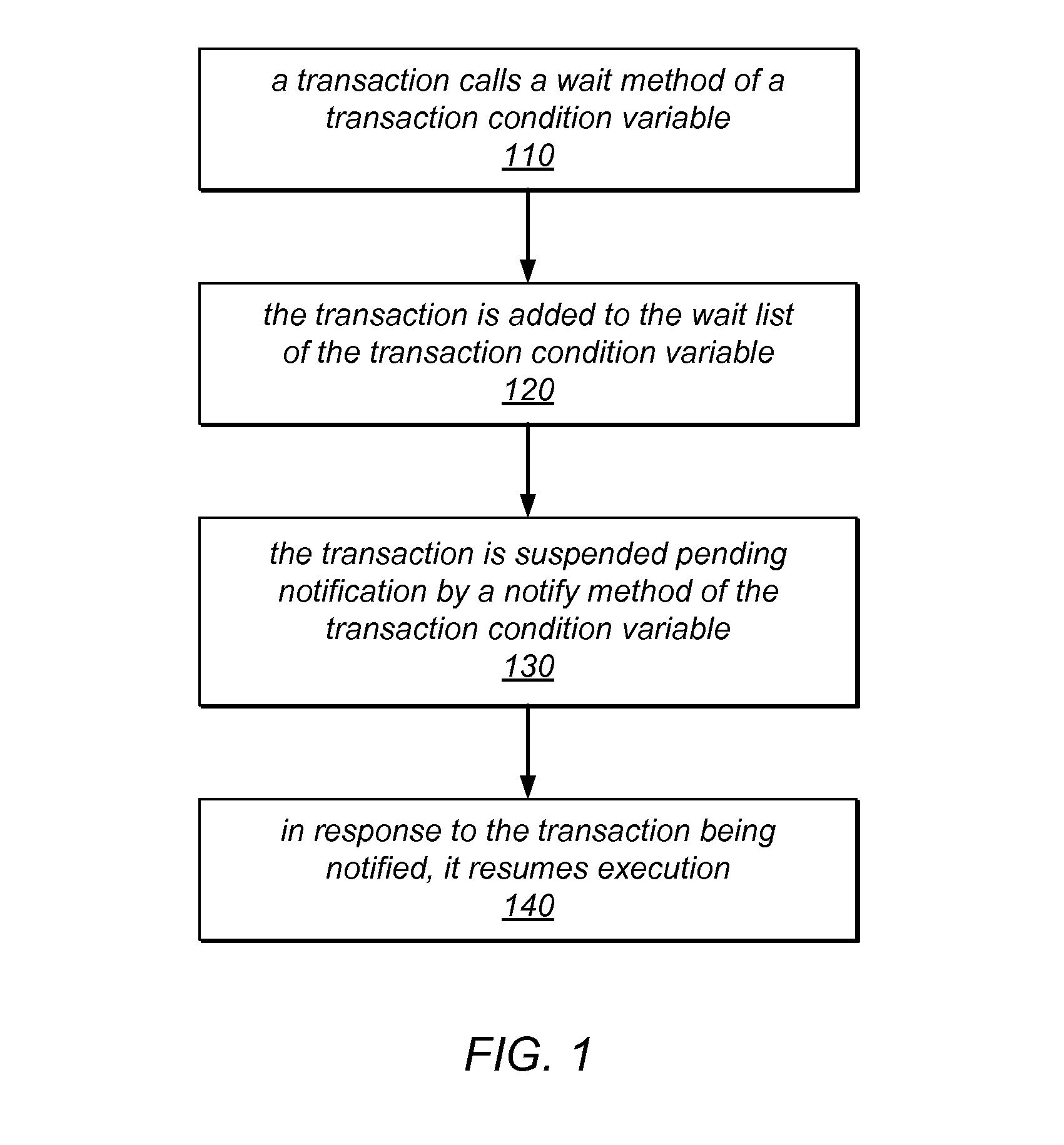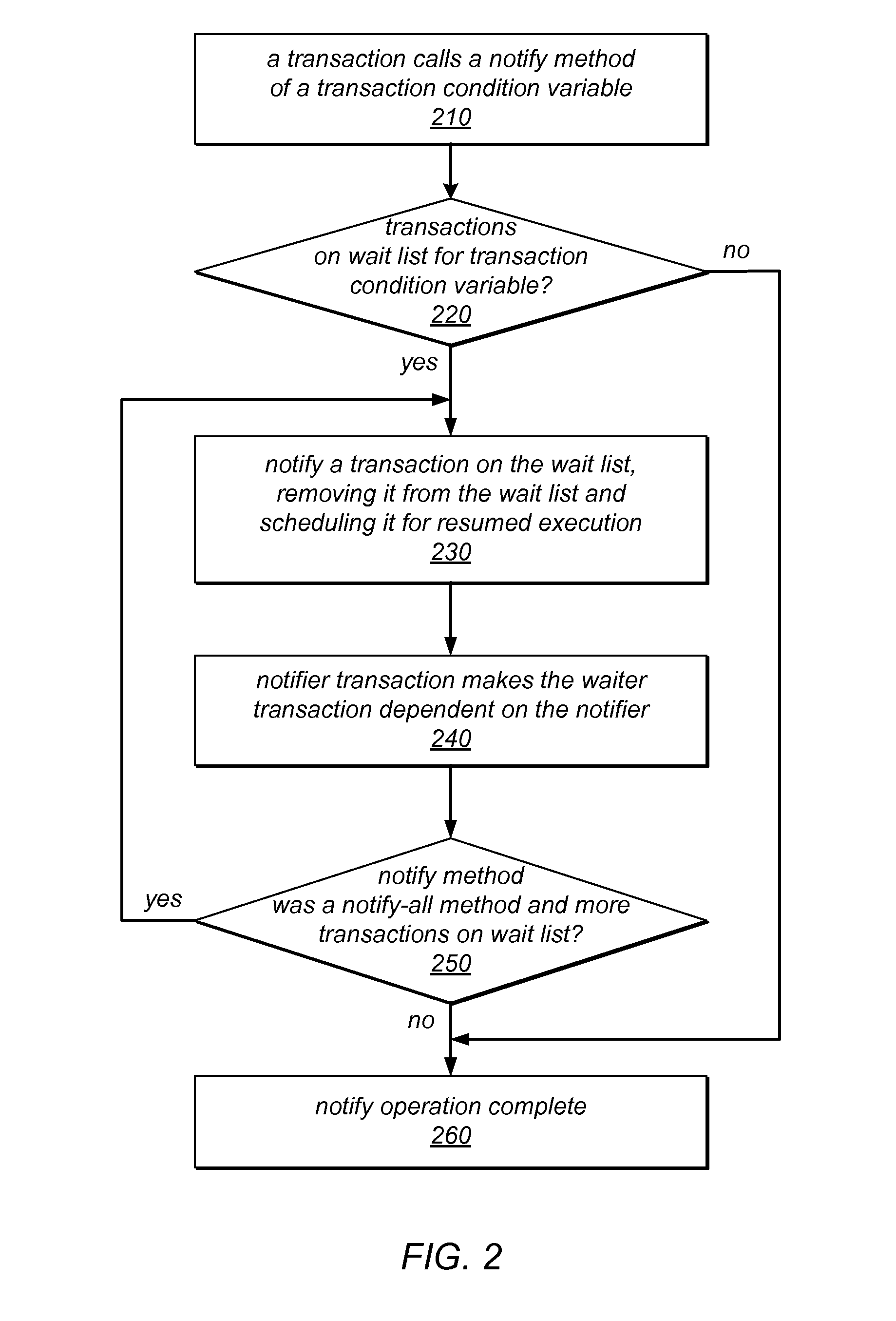System and Method for Synchronization Between Concurrent Transactions Using Transaction Condition Variables
a condition variable and transaction technology, applied in the field of computer systems, can solve the problems of limiting the applicability of transactions, insufficient to have two independent mechanisms, and isolated transactions that are incompatible with some common synchronization mechanisms
- Summary
- Abstract
- Description
- Claims
- Application Information
AI Technical Summary
Benefits of technology
Problems solved by technology
Method used
Image
Examples
Embodiment Construction
[0026]The systems and methods described herein may allow coordination and communication between concurrent transactions using transaction condition variables. A transaction condition variable (sometimes referred to herein as an xCondition) is a new type of condition variable that, unlike in previous proposals for handling condition variables with transactions, neither forces transactions to abort, nor forces them to commit. Instead, a transaction condition variable creates dependencies between a waiting transaction (also called a “waiter transaction”, or simply a “waiter”) and a corresponding notifying transaction (also called a “notifier transaction”, or simply a “notifier”). The dependencies between these transactions may require that a waiter transaction can commit only if the corresponding notifier transaction commits. In some embodiments, if waiters and notifiers form dependency cycles (for instance, in synchronous communication idioms), they must commit or abort together.
[0027...
PUM
 Login to View More
Login to View More Abstract
Description
Claims
Application Information
 Login to View More
Login to View More - R&D
- Intellectual Property
- Life Sciences
- Materials
- Tech Scout
- Unparalleled Data Quality
- Higher Quality Content
- 60% Fewer Hallucinations
Browse by: Latest US Patents, China's latest patents, Technical Efficacy Thesaurus, Application Domain, Technology Topic, Popular Technical Reports.
© 2025 PatSnap. All rights reserved.Legal|Privacy policy|Modern Slavery Act Transparency Statement|Sitemap|About US| Contact US: help@patsnap.com



